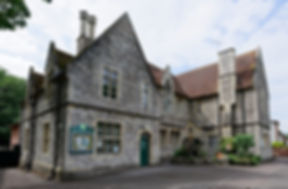
Maths
Maths at Romsey Abbey Church of England Primary School
Learning maths is like building a tower; children must have firm foundations and acquire specific building blocks in a certain order. If any of these blocks of understanding are missing, then the tower is shaky and can be toppled at any time with the presentation of new challenges or concepts.
Our approach to teaching and learning in mathematics is underpinned by the Mastery view supported by the National Centre for Excellence in the Teaching of Mathematics (NCETM) and, more locally, the Solent Maths Hub. Our vision is that pupils build on solid foundations and develop a deep understanding of the mathematical structures they are learning alongside the ability to reason and justify.
We utilise NCETM’s curriculum mapping, ensuring that teaching is sequenced into small manageable steps in order to help children to develop a deep, secure understanding of key concepts and skills. When introducing new concepts, we carefully consider which representations and models are used in order to embed understanding and build competency. We provide plenty of opportunities to build reasoning and problem- solving elements into the curriculum whilst also focusing on developing pupils’ fluency.
The Five Big Ideas of Mastery (fluency, variation, coherence, mathematical thinking and representation and structure) help children to focus on making connections between their understanding and to utilise the connections and relationships between different areas of maths. Our aim is for children to become more fluent by choosing efficient methods and considering the best starting place or method before answering a question. Variation is important in making sure that children are able to apply their knowledge because of a depth of understanding as opposed to relying on procedural knowledge. Being exposed to a variety of representations helps children to see the structure behind the maths giving them deep knowledge on which to build on.
Times Tables
Being able to recall times table facts fluently really does help children in other areas of maths, making it easier for them. The National Curriculum sets out what children need to know and when:
Year 2 – by the end of Year 2, children should be able to recall and use multiplication and division facts for the 2, 5 and 10 multiplication tables
Year 3 – by the end of Year 3, children should be able to recall and use multiplication and division facts for the 3, 4 and 8 multiplication tables
Year 4 – by the end of Year 6. Children should be able to recall multiplication and division facts for multiplication tables up to 12 × 12
We explicitly teach times tables and help children to see the links between different known facts, for example if you know that 2 x 6 is 12, you know that 4 x 6 is 24 (double 12). Having these facts readily available is crucial for children’s success in moving on to more complex maths. We aim to make learning fun by using games and songs to help the children remember. The Law of Commutativity means that there are fewer facts to learn as if you know that 4 x 2 = 8, you also know that 2 x 4 = 8!
In Year 4, children have a Multiplication Tables Check in the Summer Term. This is an online, on-screen assessment that check children’s ability to fluently recall times tables up to 12 x 12. There are 25 questions and children are given 6 seconds to answer each question. This check helps us to understand which children know their times tables. It also helps us to identify any children that may need additional support to learn them.
Times Tables Rock Stars
To help the children learn their tables in a fun and engaging way, we have invested in Times Tables Rock Stars. Children have their own logins in their school planner. Times Tables Rock Stars is an online maths platform where children practise their tables. It helps them to recall their times tables with speed and accuracy. We use Times Tables Rock Stars in school and encourage children to also use it at home to support their times tables learning.
There are lots of games that the children can play. Garage Mode supports progress through the times tables at a pace appropriate to the children. This is particularly helpful when children are beginning to learn their tables. If children are practising their tables up to 12 x 12, they should then focus on developing their speed and rock status in Studio Mode.
When children play games they earn virtual coins so that they can personalise their rock avatars and move up the rock leader board. We set up regular tournaments and celebrate achievements and successes in our weekly celebration assemblies.


